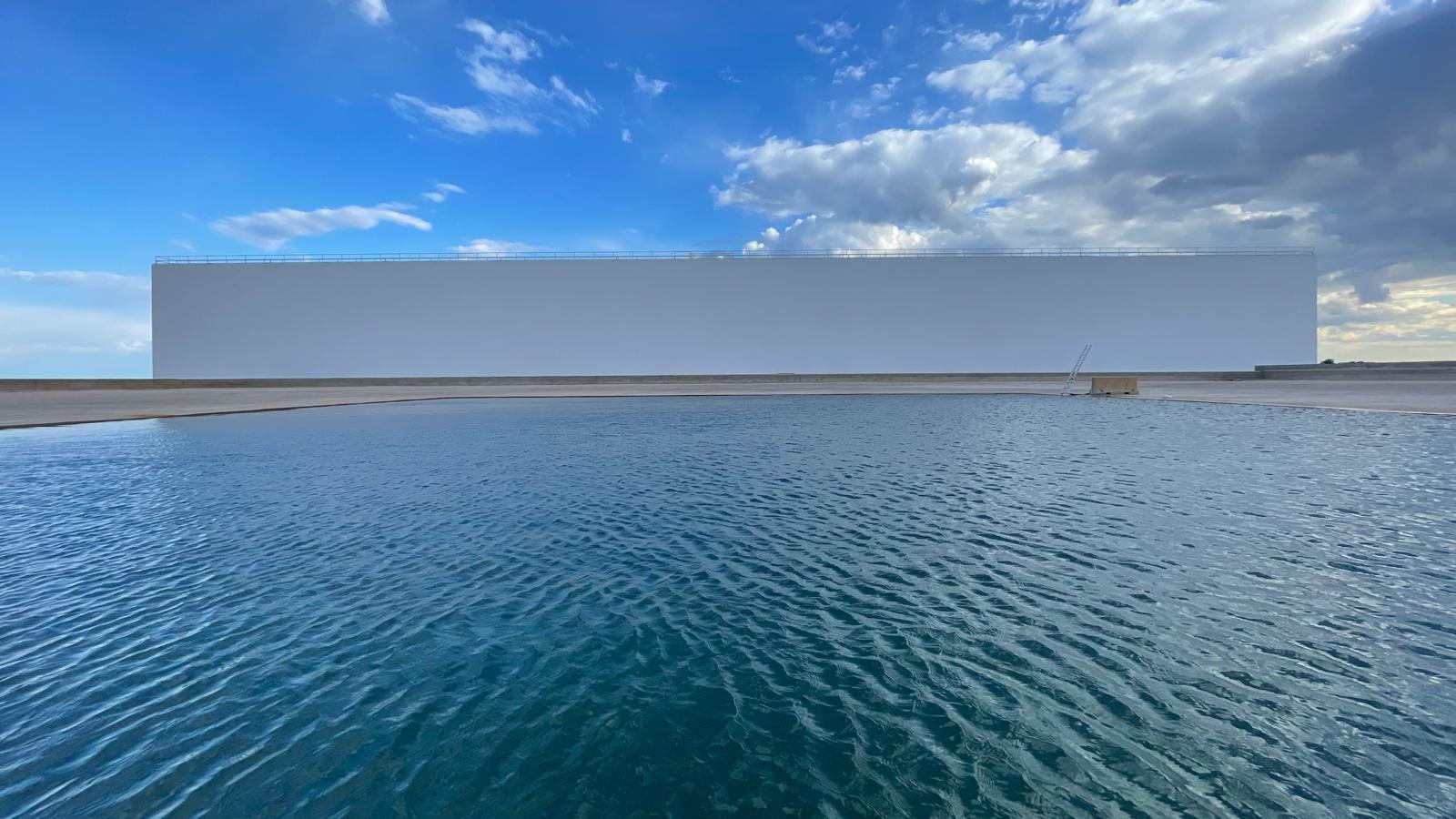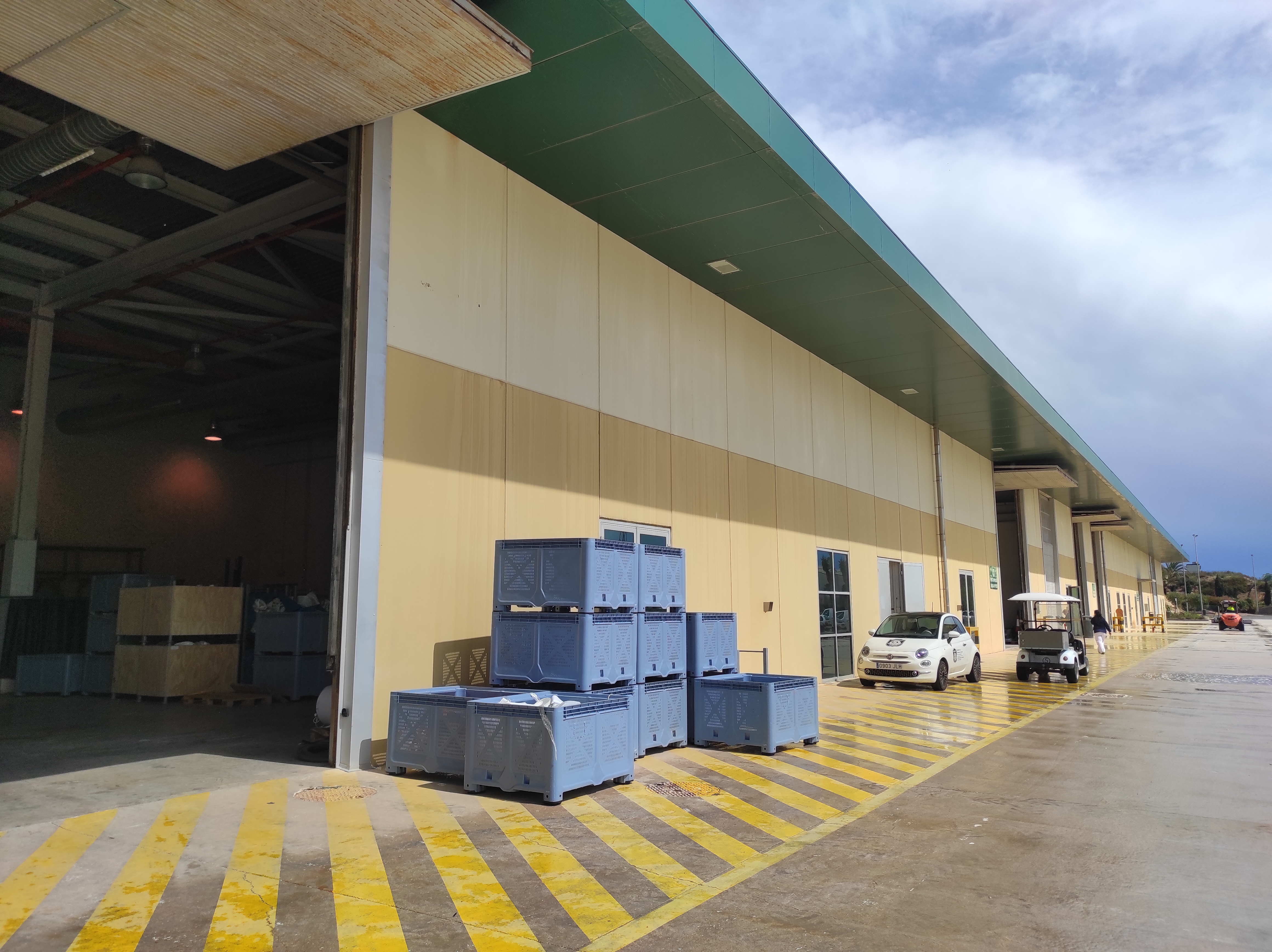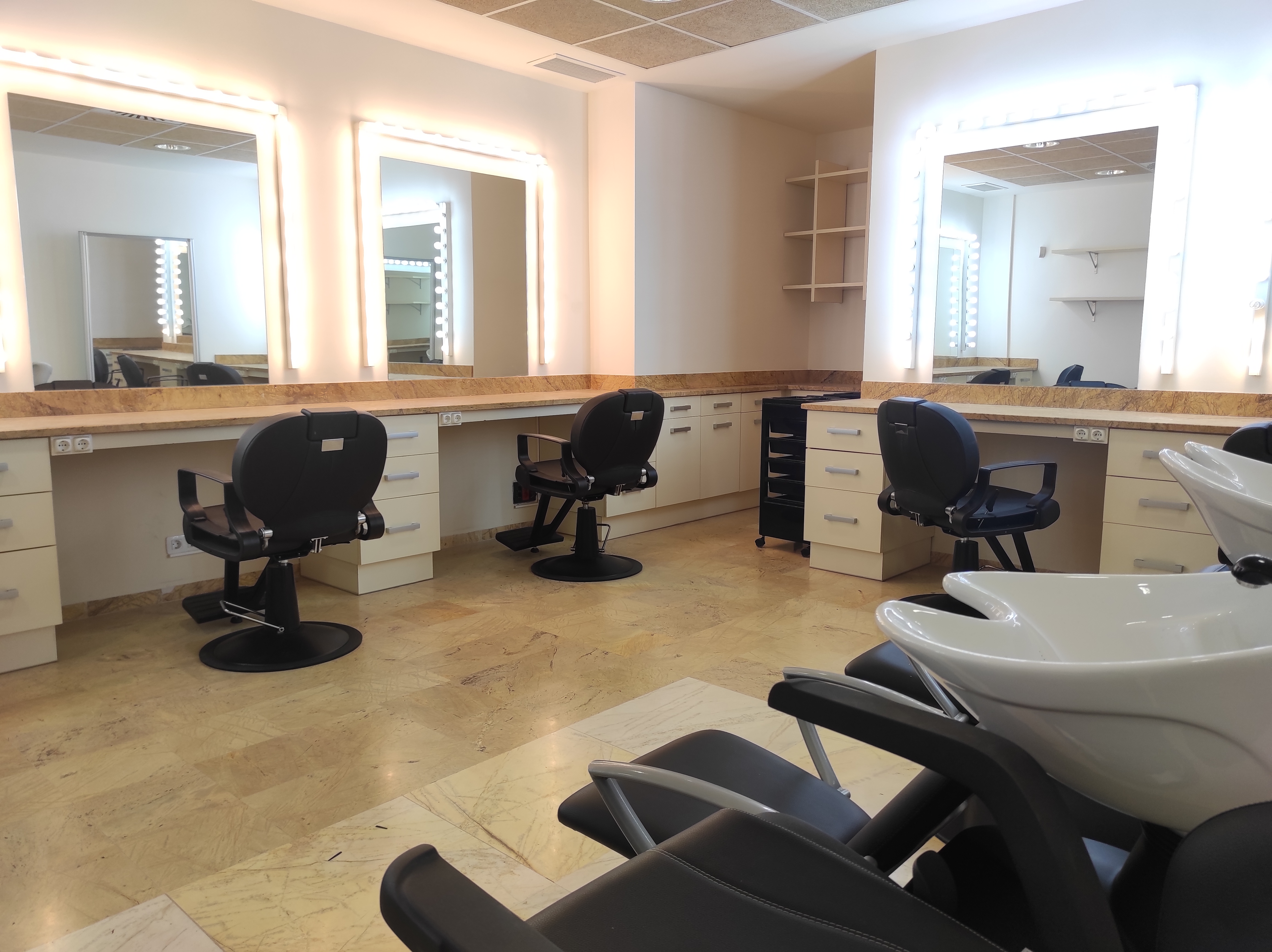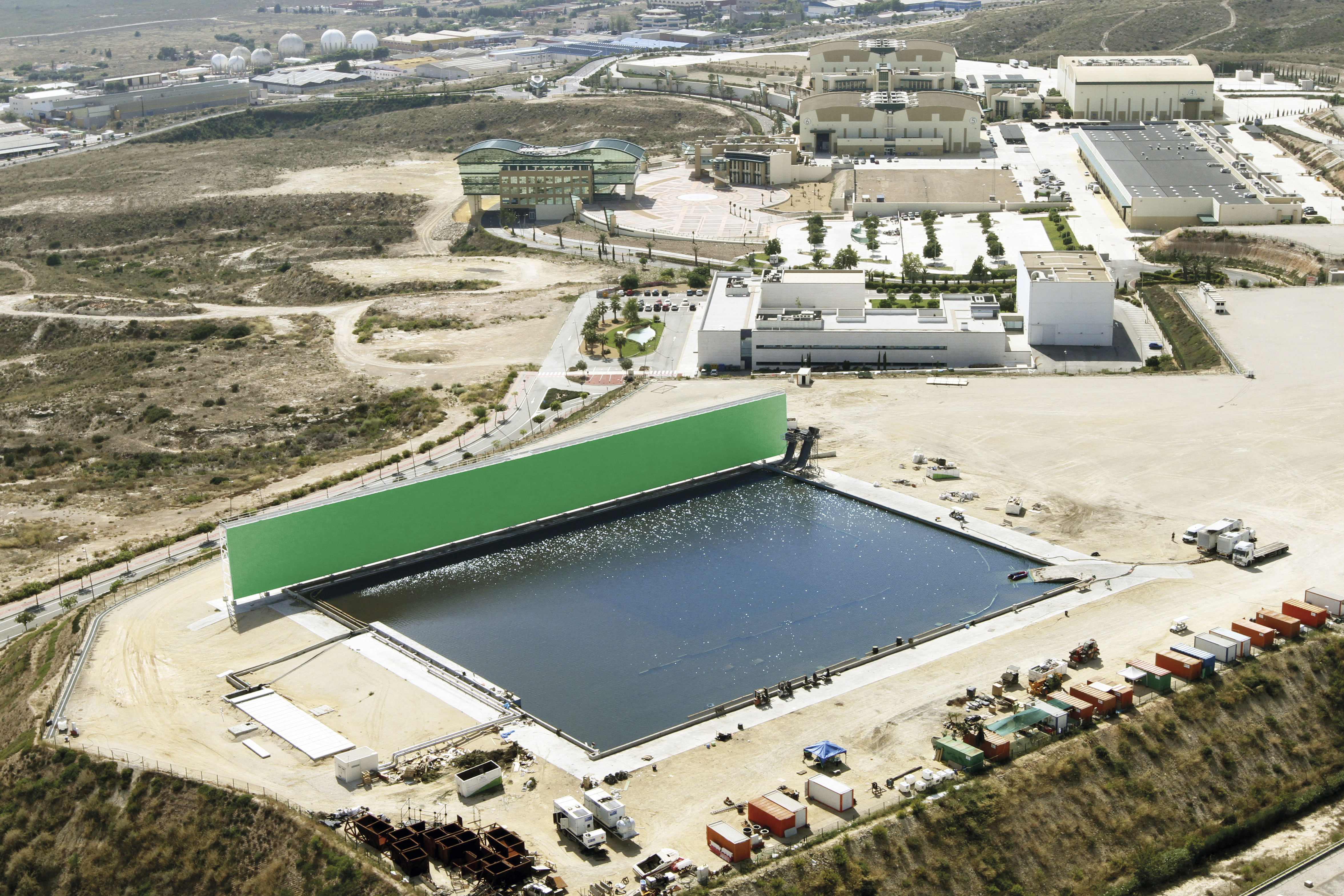
Ciudad de la Luz Film Studios: the audiovisual technology hub of the Valencia Community Region
Spain has one of the best filming facilities in Europe: Ciudad de la Luz Film Studios, an audiovisual industrial complex located on the shores of the Mediterranean in Alicante.
These studios are owned by the Generalitat Valenciana, through the Regional Ministry of Innovation, Industry, Trade and Tourism, and managed by the public company Sociedad de Proyectos para la Transformación Digital (SPTD). The facilities occupy an area of 80 hectares dedicated exclusively to the filming of all kinds of audiovisual productions.
We had a conversation with Fermín Crespo, general manager of the Sociedad de Proyectos para la Transformación Digital (SPTD), the company in charge of the Ciudad de la Luz facilities.

Fermín Crespo, director general de la Sociedad de Proyectos para la Transformación Digital (SPTD)
APCP: What does it mean for Spain to have a place like Ciudad de la Luz?
Fermín Crespo: Ciudad de la Luz can be described as a ‘’national project‘’. The size of the facilities, the quality of the studios and the philosophy of Ciudad de la Luz make it a benchmark in the audiovisual sector with the capacity to compete with the best film sets in the world. Since its reopening, it has become a very attractive location for both national and international filming. The Ciudad de la Luz studios complete the national offer of facilities for all types of productions thanks to its technical characteristics, but also thanks to its location, communications, its 300 days of sunshine and its hotel facilities… I am convinced that the time has come to consider the audiovisual industry as a relevant sector for the diversification of the economy of the Valencian Community and Spain, given that this year the audiovisual sector will generate business worth 8,000 million euros, will reach a level of employment of 85,000 workers and will produce 1,000 million in exports. This expansive moment is ideal for seeking cooperation scenarios between regions to compete with other countries that are also strong in the audiovisual sector and that compete with us for all kinds of productions. So, I insist, I believe that Ciudad de la Luz is a centre of reference, that it is a success for all of us that it is once again operational and that we must take advantage of it to strengthen the sector, to share and cooperate in more and more projects.

APCP: Having facilities like these in the city means important support from the Valencian Community for the audiovisual industry, is this reflected in economic terms? In other words, is there a balance between promotion, maintenance and return?
Fermín Crespo: It is obvious that this type of facility requires constant maintenance and investment to keep it up to date and in a perfect state of use. There are two clear objectives in the Ciudad de la Luz management plan: on the one hand, to achieve a balanced budget with the income from the use of the facilities, and on the other hand, and most importantly, that the social return of the audiovisual projects that use the film studios or are shot anywhere in the Valencian Community generates investment, mobilises all the economic sectors, especially the auxiliary industry, and contributes to the creation of quality employment. Recent film shoots have shown the great impact on lighting, set construction, sound, production and post-production, hairdressing, make-up, transport, vehicle hire, carpentry, special effects… but also on accommodation, hotels, transport, commerce, vehicle hire, translators and a long etcetera of companies that benefit from the presence of productions in the studios.The example of Venom 3, the last dance, is very relevant. The pre-production and filming team spent four months in Ciudad de la Luz and in the Valencian Community and generated an impact of 35 million euros that went directly to companies, workers and professionals in the area. But to these remarkable figures we should also add the impact of El cautivo, Mala influencia and Los Tigres. To give a very objective figure: these four productions have added up to more than 30,000 overnight stays in the province of Alicante, which would not have materialised without these productions. These statistics show that the audiovisual industry is a very important support for tourism. Another facet to take into account is that the reopening of the studios is attracting companies from the audiovisual sector that are settling in the area and will generate an increasingly dense industrial fabric.
APCP: Are these installations available for all types of audiovisual productions? More precisely, are they available for the advertising film production sector?
FC: The facilities were created for all kinds of audiovisual products. This year we have already had several premium advertising productions. One of the most recent has been the Masorange spot, one of the most impactful creatives of recent months on the national scene. And in recent weeks we have hosted two other advertising productions featuring premium products that we cannot reveal because they have not yet been presented to the public, but which will also have an impact when they are released. The facilities at Ciudad de la Luz are very functional, which makes it very easy for the crews to work when they come to shoot. They have an element that makes them different and very attractive for advertising: the largest and most versatile water tank in Europe (with a surface area of 8,000 square metres and a chroma key measuring 120 metres x 12 metres high), a fundamental setting for all creative projects linked to water, especially marine projects. One of our objectives is to make our facilities known to all advertising agency producers and creatives, because we are convinced that the six sets, the workshops, the backlots and the water tanks (in addition to the outdoor set there are two smaller ones) are very useful due to the ease of assembly, filming and disassembly. In addition, we have an experienced technical support team to manage the facilities, which makes the work of the production companies much easier.
APCP: In that context, is it a resource available for domestic filming or is it designed more to attract large foreign productions?
FC: From the titles that have passed through here in the last fifteen months, it’s a mixture of both. We have had two productions of great global relevance, Venom the Last Dance and In the Depths of the Seine – the latter, number one in 85 countries and listed among the five most watched non-English language films on Netflix -, but also national ones that have had specific weight, such as The Law of the Sea and some that aim to be very relevant such as Bad Influence, directed by Chloé Wallace; The Captive, directed by Alejandro Amenábar; or Los Tigres, directed by Alberto Rodríguez. These references and the opinions of directors and producers working at Ciudad de la Luz confirm that the facilities are prepared for all kinds of productions.
- D.Giovanni
APCP: Do you rent only the installations or do you also have your own technical equipment available for hire?
FC: The philosophy of Ciudad de la Luz is to promote the maximum development of the ancillary industry. Therefore, we focus on the rental and management of the spaces and let the service production companies contract companies, if possible from the Valencian Community, to attend to their needs in all areas of filming. This is a way of promoting the local industry and, we believe, the best way to give content and strength to the audiovisual industry in the Valencian Community. Our team has an up-to-date list of companies and highly qualified professionals that we make available to production companies when they start work in Ciudad de la Luz.
APCP: What is the biggest challenge in managing a space like this?
FC: The first challenge, after 10 years of inactivity, is for all film professionals to know that Ciudad de la Luz is operational and in optimum conditions to take on all kinds of projects. Its design makes it possible to combine filming in the water area, in the two backlots and on the sets, while at the same time being able to have filming units in the magnificent locations throughout the Valencian Community, which is a marvel for its architectural diversity and its incredible natural landscapes, both inland and on the coast. The biggest challenge we face every day is to remain active and competitive, to keep our facilities up to date and in perfect condition, to have technical equipment capable of responding to production needs and to have the capacity to provide local resources to producers so that they do not have to bring in technical equipment and materials from elsewhere. Our ability to compete and be more sustainable depends on this. In the immediate future, we are very focused on reinforcing the sustainability of the studios and on incorporating the most advanced technology for filming, in order to meet the expectations that production companies have when they come to Ciudad de la Luz.
Interview by Grisel Alboniga








